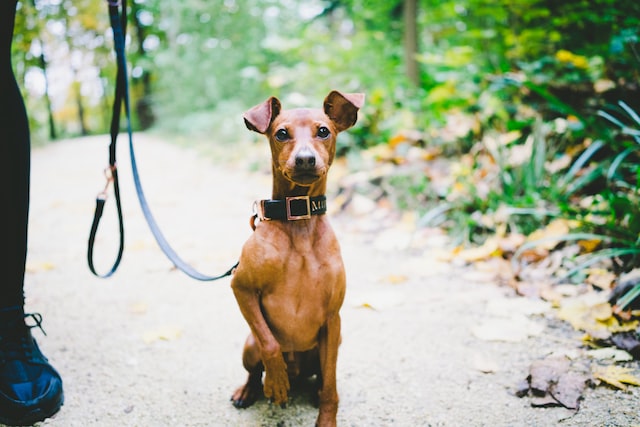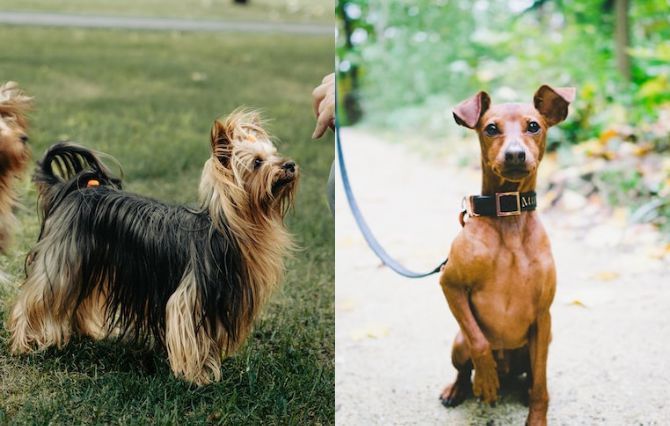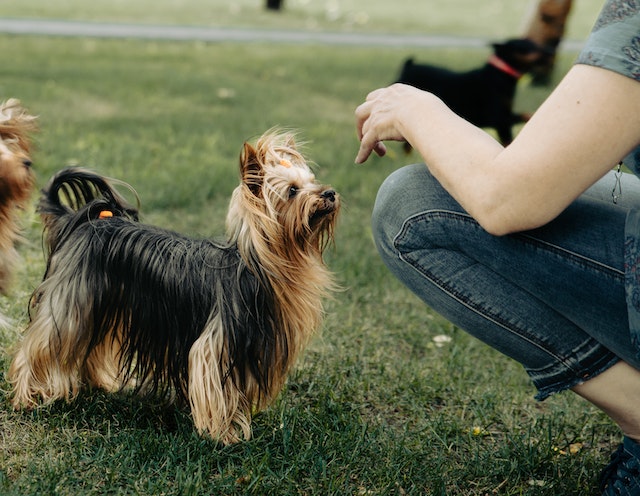The Miniature Pinscher

The Miniature Pinscher is fondly referred to as the “Min Pin” by its fans! Contrary to popular belief, the Min Pin is not a descendent of the Doberman. The one trait that it does however share with the Doberman is that the Miniature Pinscher too is a one-person dog. In a family, the Mini Pinscher will bond strongly with one member of the family as compared to the rest of the members.
An extremely energetic dog, the Min Pin requires a lot of exercise- both indoors and outdoors. Not only are they energetic, they are also known for their curiosity. They need constant supervision because the Miniature Pinschers have a penchant for chasing and chewing things. If they’re really small items, the Pinscher might choke on it. The care you need to give to a Miniature Pinscher is somewhat similar to taking care of a human baby during its infancy!
The Min Pin is easily trainable and it seems like they really understand what you’re trying to teach them. That being said, they don’t respond very well to rough handling and harsh words. As long as you exude patience and love, they’ll adjust to anything, including younger children and other pets. It is advisable that you introduce them to the other family pets in their puppyhood.
Known as the ‘Houdini’ of the doggy world, don’t let them wander off on their own or leave them in an unguarded fence; keep them on a leash when outdoors. During the winter, they like to be warm and might cuddle with you under the blanket. Min Pins are prone to gain a few extra pounds if their diet and exercise is not supervised closely.
Care & Health:
- Major concerns: none
- Minor concerns: Legg – Perthes, patellar luxation
- Occasionally seen: PRA
- Suggested tests: knee, (eye)
- Life span: 12 – 14 years
- Grooming: A fairly low maintenance dog, the Pinscher only needs the occasional brushing to remove the dead hair from its fur.
History:
Contrary to popular belief, the Miniature Pinscher isn’t a miniature version of the Doberman pinscher. The Miniature Pinscher, bred in Germany, is in fact a cross between the Italian Greyhound and the Dachshund. Their popularity soon spread from just Germany and Scandinavia to Europe and North America.
1895 was when the first German Pinscher Club was formed and in 1929, the Miniature Pinscher Club of America was formed. The AKC registered the Miniature Pinscher as the Pinscher Toy in 1925, but was changed to Miniature Pinscher in 1972. They are fondly referred to either the ‘MinPin’ or the ‘King of all toys’, toys being the size of a dog.
As of 2007, the AKC ranked the Miniature Pinscher 26th out of 157 breeds.
The Silky Terrier
The Silky Terrier is absolutely devoted to its owner. Not only does it develop a strong bond with you, it will also follow you wherever you go. Don’t mistake it to be a mellow lap dog though. The abundant energy it comes with, you can’t afford to let him get bored. The strong chasing instincts they come with, will require to put them on a leash when outdoors. Daily walks and runs are a must to contain the stamina that is inherent in the Silky Terriers.
Like all terriers, Silky Terriers aren’t very good at socializing with other animals, regardless of their size. If you’re planning to keep two pets, then buy them both at the same time so they’re used to each other. This aggressive behaviour also extends to strangers, which makes them excellent watchdogs. They use their keen sense of hearing to seek out any threats to their family or territory and indulge in loud high-pitched barks when they sense danger.
If there’s one thing a Silky Terrier loves, it’s to bark. You could however, train them not to bark unnecessarily. Being easy to train and a quick learner, you could experience some stubbornness on their part along with being difficult to housebreak. Just be firm and patient and use motivational techniques to get them to listen to you!
The Silky Terrier is no exception when it comes to getting along well with older children. Younger children tend to man handle dogs, which could lead to nasty retaliations.
Care & Health:
- Major concerns: none
- Minor concerns: intervertebral disc disease, elbow dysplasia, patellar luxation, Legg – Perthes
- Occasionally seen: diabetes, epilepsy, tracheal collapse
- Suggested tests: elbow, knee
- Life span: 11 – 14 years
- Grooming: Brush the fur every day for 10-15min to avoid tangles and clip the coat every 6 weeks.
History:
Originating in Sydney, Australia, the Silky Terrier was a result of cross-breeding of the Yorkshire Terriers and the Australian Terriers in the 1980s. . A certain standing for the breed was first set in 1926, then refined in 1955, wherein the name “Australian Silky Terrier” was decided for the new breed. It’s said that only after World War II, when soldiers who had been stationed in Australia, took the Australian Silky Terrier home with them to the United States. In 1932 legislation in Australia brought an end to crossbreeding in the 20th century. In 1955, the Silky Terrier Club of America was formed.
The American Kennel Club recognized the Silky Terrier in 1959. The Silky Terrier continues to be very popular both as a companion and as a show dog. Its AKC popularity was ranked 74th out of 157 in 2007. Even though it’s not a rare breed, its popularity has always been mediocre.

